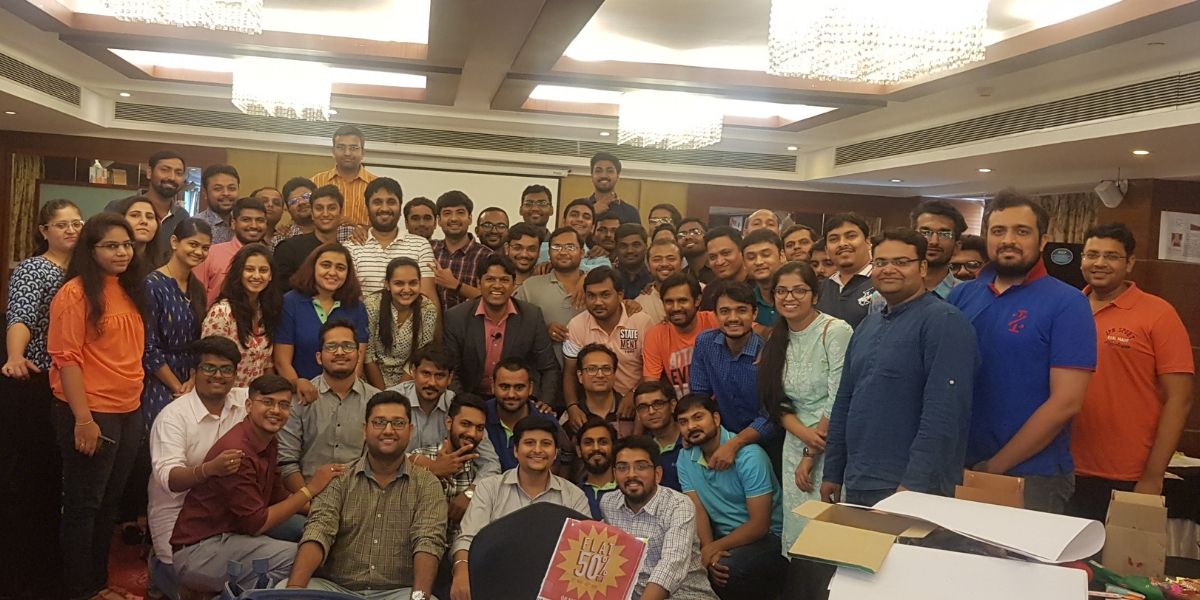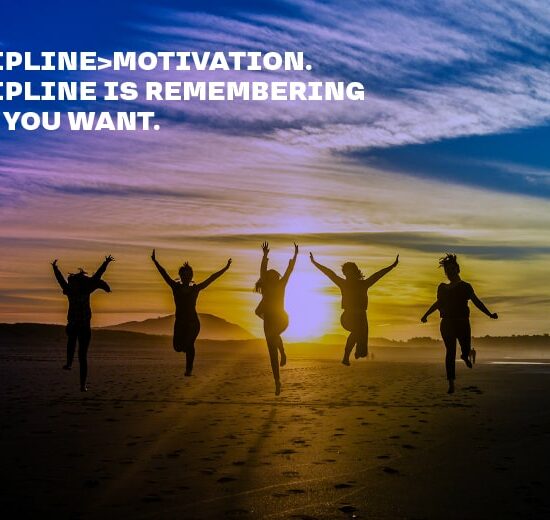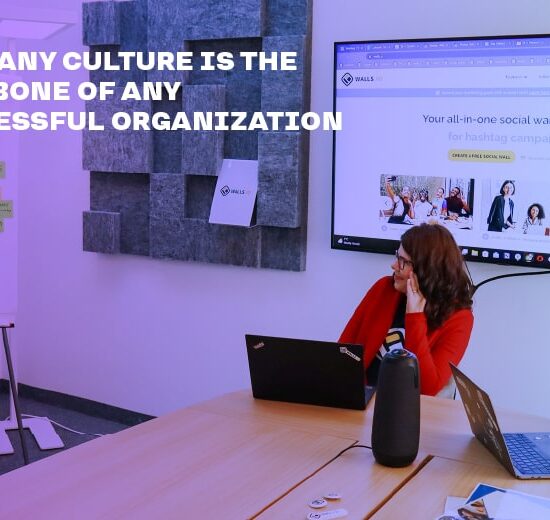Lights are shimmering, keyboards are cranking, there’s a pungent smell of coffee and snacks filling the office space…this can mean only one thing…our dedicated employees are working hard to float our corporate boat! But if we look closer, it may just be that we lack the management at so many levels that extra work hours have to be punched in just to cope up with the work or to get it done!
At the same time questions like “We need to think differently”; “This needs some fresh approach”; “I have got to be more creative on this”, keep lingering around, primarily because all of us tend to get stuck in certain thinking patterns. All these factors cumulatively add to something that we often refer to as a ‘block’ where we punch in, routinize our daily work, punch out and repeat this cycle for days, or even months at a stretch!
What does this mean? The answer is simple; our employees need a boost. Not the deterrent kind but the motivational kind. Efficiency comes from structured ideation that in turn leads to optimized, prompt and result-driven outcomes. Stressing over hours or forcing yourself to think ‘out-of-the-box’ at all times leads to nothing but sheer waste of time.
Innovation and futuristic thinking are in the culture of Amnex! So is the paradigm that ‘efficiency comes from thinking from the consumer’s point of view’. Quintessential innovators like Steve Jobs are a testament to this paradigm, who revolutionized the industry by generating a want for things that never existed, and created a billion-dollar market for it.
And to promote this very cultural ideology, we organized an exclusive design thinking workshop that focused on new age methods of problem solving, developing the art of listening, fostering user empathy, whole-brain thinking, importance of collaboration, and experimentation. Innovation is positive change. Innovation is all about taking forward strides and being responsive to market demands. The purpose of the workshop was to help us to be more successful by revisiting our attitude for change, market sensitivity and answering the rudimentary question, who and why do we create products, services, and programs for? We’re sharing our experience of the workshop, so that more people can break patterns, and bring out the ‘innovator’ in them. After all, we’re all built the same way; it’s just a matter of getting the perspective right.
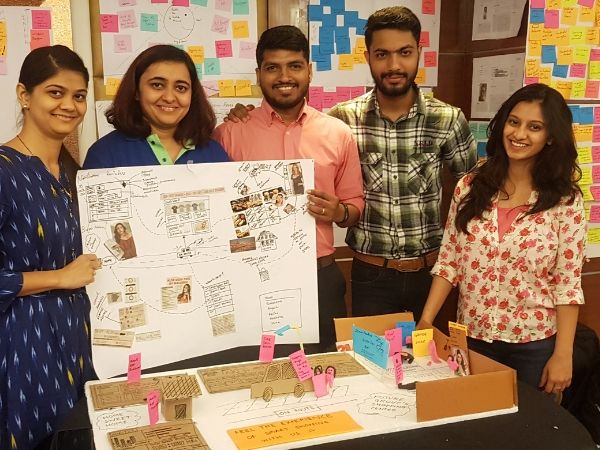
Our two days of Design Thinking began on a very simple yet eye-opening note-on how to “Challenge our assumptions” by looking at the bigger picture, rather than focusing on compartments of a project or idea. Drawing from stereotypes and archetyping problems leads us to create assumptions that are often very mundane. Take for example a superhero, every superhero has a strength, a set of values and a weakness. But do those powers need to be otherworldly? Do those values always have to adhere to the highest moral standards? And does a weakness always have to exist? By exploring this concept, we broke the ice in our minds, and realized that the first step to problem solving has more to do with empathy rather than set parameters of logic or stereotypes.
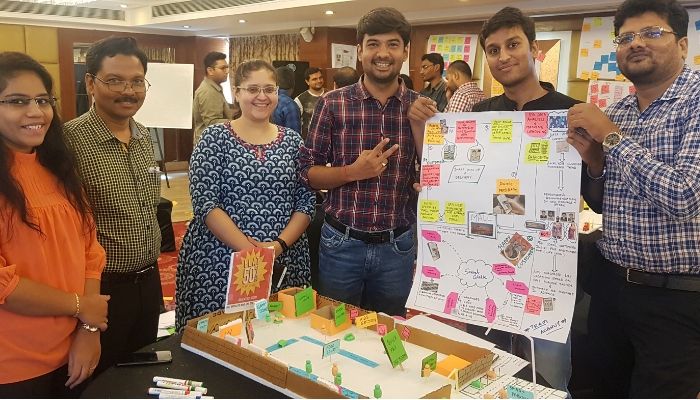
Another aspect that we can endorse when it comes to effective ways to find solutions is to ‘reword the problem’ itself! For example, rather than thinking “What the problem is?” or “What can we do?” or “what shall be our next step?” we can ask questions like “Why do we need to solve the problem?”, “What’s the barricade here?”, “What will happen if we don’t solve the problem?”. This can help gaining new insights into the problem and come up with new ideas to solve new problems.
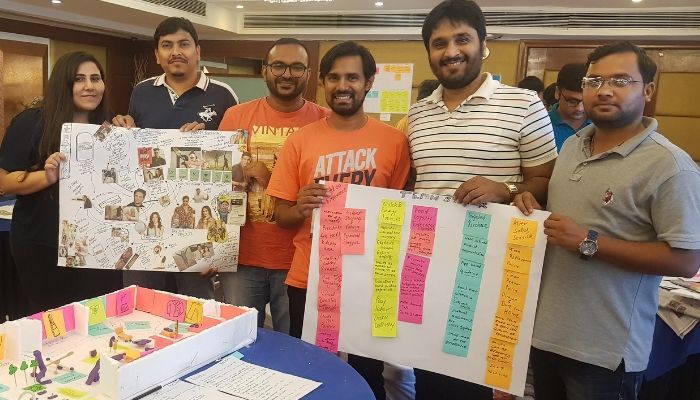
In tandem with problem solving, it is also essential to harness the art of ‘thinking’; and by thinking we do not mean just differently, but also functionally. We get stuck with one idea and feel there is no way we can generate anything new around it. The way around this is to attack the problem from another angle. For example, instead of thinking what more can be done to make the product better, how about we think what are the disadvantages of the product that we have so far? This would help get a balanced perspective where we have the disadvantages on one side and the advantages on the other to give us a clear picture of how to upgrade/ improve the product.
And finally, let’s talk about communication and teamwork. We have multiple ways in which we communicate but when it comes to the workplace, we get stuck with only verbal reasoning ability. Instead, what if we express the challenge through a different medium? Like pictorial referencing, or by presenting an analogy of a movie or a personal situation? Doing this can really help the fellow teammates understand the situation better. Just like a picture is worth a thousand words in the same way, visual expression may give different patterns and with these new patterns we can yield new ideas in solving the problem. This exercise also helps in building teamwork by motivating fellow team mates to ask questions based on the situation visually expressed to them.
We learned these things through highly interactive exercises; where no ideas were too small, no questions, too simple, and no solution unachievable. We brushed up on the fundamental principle of humanizing a problem, and so that we can understand the root complications, rather than generalize based on a plethora of set parameters. For example, let’s consider that a supermall, has the problem of ‘decreasing footfalls’. Upon hearing this, the immediate reaction of our team was to talk about mind blowing technologies powered by next-gen virtual experiences to lead customers back into the doors of the mall. But was that the real solution? In fact, when we took a step back, and talked about why we ourselves avoided going to malls, or thought about what problems we faced as customers, that we realized that our initial ideas would just not work! It was when we took the initiative to express our personal concerns, throw them up on the board, that we were able to devise an actual, functional solution that would enhance user experience, and excite customers to visit the mall.
The difficulty with defining the term problem is that problem solving is relative. The same tasks that call for significant efforts from some people may well be routine exercise for others, and answering them may just be a matter of recall for a given mathematician. Thus, being a “problem” is not a property inherent in a task. Rather, it is a particular relationship between the individual and the task that makes the task a problem for that person
— A. H. Schoenfeld, Mathematical Problem Solving.
The sheer experience of taking a more human and hands-on approach to problem solving, brainstorming with fellow teammates, and prototyping our thoughts into products was just as inspiring as it was exhilarating.
In the two days, we not only covered the basics, but also learned to think like innovators and as providers of tech-driven solutions to global challenges. From ideation to collaboration, bouncing ideas to white-boarding solution workflows, every Nexie revved up their right-brain muscles and made the most of this interactive workshop.
After all, our work culture is defined by our employees and it is endorsed by its higher-ranking personnel. The more positive and organized our work culture becomes, the better will be our employee satisfaction ratios. Of course, there will be that ‘non-satisfied’ lot. But the overall Idea.


